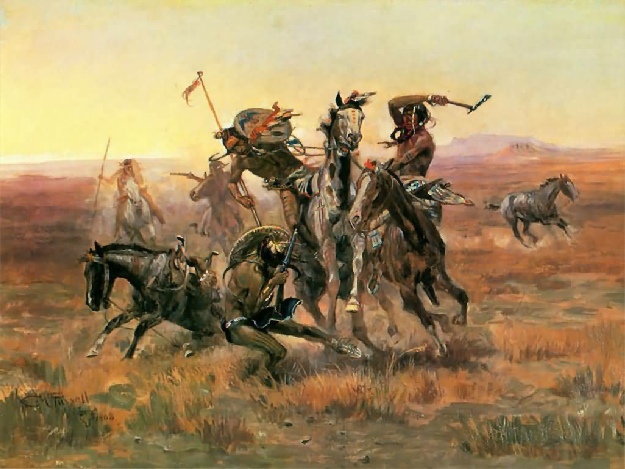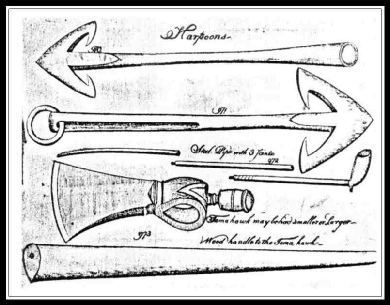Subject Guide

Mountain West
Malachite’s Big Hole
Pipe-Tomahawk or Pipe-Ax:
The Pipe-Ax or Pipe-Tomahawk was a unique item developed for the North American fur
trade. There was no European equivalent prior to its development in North America.
Combining the symbols for both war and peace the pipe-tomahawk was a highly desirable
trade item for Indian chiefs and warriors as well as for frontiersman and militia.
The pipe-tomahawk was not only a trade item, but was a gift of great value and meaning
to be given at treaties, councils and other governmental-Indian events.
was not only a trade item, but was a gift of great value and meaning
to be given at treaties, councils and other governmental-Indian events.
The pipe-tomahawk was not merely a ceremonial item. Through most of its 200 or so year history, it was also a terrible weapon when used in close combat. Dr. Marcus Whitman was killed with a pipe-tomahawk during an uprising of Indians at his mission in 1847 (For more information on the Whitman Massacre).
There is no documentation regarding when or who developed the first pipe-axes. Both axes and smoking pipes were common and profitable items of trade with the Indians from nearly first European contact in the early part of the sixteenth century. The similarity in gross shape between the Indian pipe and the ax possibly suggested a combination of the two forms.
Earliest references to pipe tomahawks are in the early 1700's. The early forms may have started with a polled ax (hammer ax) drilled to form a bowl and with a drilled haft. By 1725-1750 the pipe-ax had become a common and profitable trade item. Many of the pipe-axes made up to about 1800 continued to be functional chopping tools. As the trade moved west into the mid-continent prairies in the early half of the nineteenth century there was less need for cutting trees. Lighter, less massive heads and longer hafts were better suited as a weapon of war to be used from horseback. The image below is by C.M. Russell titled "When Blackfoot and Sioux Meet." The warrior at right is clearly wielding a pipe-tomahawk with a cut-out shape in the blade.

Pipe-tomahawk heads might be either iron or brass, and were formed both by casting or forging. Because brass is much softer than steel, brass pipe-tomahawks often had a steel insert dovetailed into the head as a bit.
Pipe-tomahawks were a prized possession of both the Indian and Frontiersman. Many pipe-tomahawks had heads that were intricately engraved, the finer being inlaid with brass, pewter, and in some cases silver or gold.
Hafts were often decorated with silver or brass inlays, pewter castings, and carvings. Most commonly hafts were made of ash, hickory, or maple. Although the iron or brass heads of the pipe-tomahawk were durable, the hafts were subject to damage and might be replaced multiple times. Hafts on pipe-tomahawks used for chopping or as weapons of war would often be cracked or broken during use. With frequent use, hafts might also be smoked-out, that is burned out from the inside.
I have have only found pipe-tomahawks listed on the 1839 Bent’s Fort ledgers. However,
pipe-tomahawks seem to be common, and appear in a number of the drawings and paintings
made by Alfred Jacob Miller. A possible explanation for this is that pipe-tomahawks
were listed simply as tomahawks or axes. This is supported by a Birmingham and Sheffield
tool catalog from 1830 which clearly shows a pipe-tomahawk in one of their illustrations
shown above. The caption in the catalog, however, simply reads "Tomahawk may be had
smaller or larger." This illustration also show a pre-drilled haft shown below the
pipe-tomahawk. Some western fur trade inventories list war-axes or battle-axes.
It’s my opinion that these are another type of tomahawk as the pipe-tomahawk are
listed with a wholesale prices more than 70 percent higher than for battle-axes
drawings and paintings
made by Alfred Jacob Miller. A possible explanation for this is that pipe-tomahawks
were listed simply as tomahawks or axes. This is supported by a Birmingham and Sheffield
tool catalog from 1830 which clearly shows a pipe-tomahawk in one of their illustrations
shown above. The caption in the catalog, however, simply reads "Tomahawk may be had
smaller or larger." This illustration also show a pre-drilled haft shown below the
pipe-tomahawk. Some western fur trade inventories list war-axes or battle-axes.
It’s my opinion that these are another type of tomahawk as the pipe-tomahawk are
listed with a wholesale prices more than 70 percent higher than for battle-axes
For more information on Pipe-Tomahawks see the following references:
Baldwin, John. Tomahawks-Pipe Axes of the American Frontier. 1995, Published by the Early American Artistry Trading Company, West Olive, Michigan. ISBN 0-9651146-0-0.
Russell, Carl P. Firearms, Traps, & Tools of the Mountain Men, published by University of New Mexico Press, 1967. 448 Pages.
Gutchess, Gerald & Alan Gutchess. Instructions and Hints for Assembling Pipe Tomahawks. Copyright 1996.